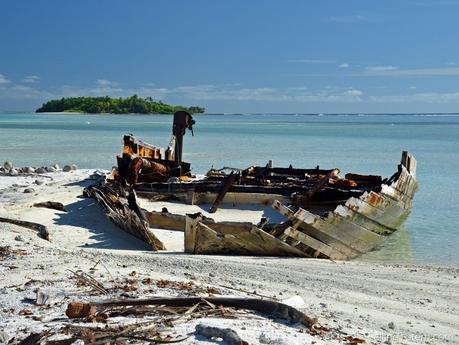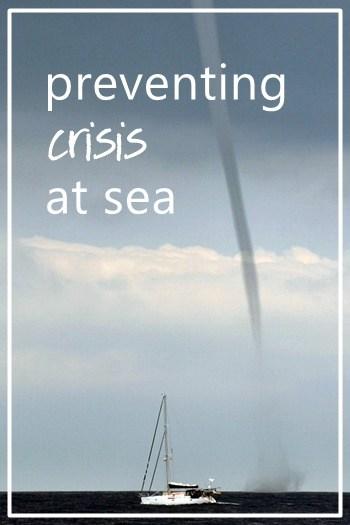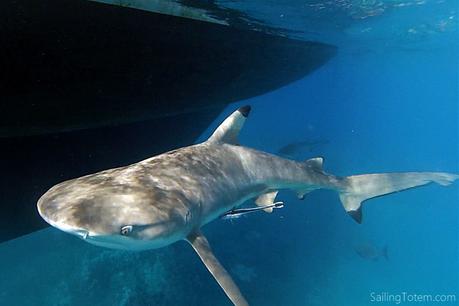
Fears of disaster at sea can loom large; even for adrenaline junkies, misadventure is not the desired companion to adventure. Jamie shares one facet of thinking around avoiding crises at sea here; for more, join Cruisers U and attend seminar at the Annapolis Boat Show next month.
Some boaters will experience a crisis situation. All come close, repeatedly… You know, like that time during the headsail change when the halyard slipped away, and then… Oh wait, that one became a crisis. How could a loose halyard go so wrong, right? Let’s let the halyard dangle, for now, while we talk crisis.
What is a crisis? Multiple concurrent problems for which there are no procedural solutions.
An emergency may be terribly bad, but it’s not a crisis. The difference matters. It’s a little like when you were a freshman and procrastinated writing a paper. You pulled an all-nighter and finished it just in time – stressful. Then as a self-assured sophomore, the same thing happened except you had three papers due and a kegger all demanding attention on the same night – stressful with very mixed outcomes. Multiples are much harder to manage.
We sailed into Port Villa, Vanuatu in October 2010 and while figuring out the fairly crowded anchorage, a sailboat was towed past us and put on a mooring.

Engine failure came to mind, but we learned otherwise. A guy was out sailing with his girlfriend. It was a nice day that got a little lumpy which caused an issue with the dinghy. He went aft to sort it out – and fell overboard. Like the sinking catamaran, this is a serious emergency. The girlfriend was not a sailor and had no idea what to do. Single problem cascaded into multiple problems:
3) crew member overboard
4) crew onboard could not maneuver the boat being steered by autopilot
5) visual of victim was lost
6) boat was sailing without control towards an island
The number sequence is not wrong. The boyfriend going overboard was an emergency, but problems began earlier as elevated risk:
1) towing the dinghy in the ocean in unsettled sea state.
2) not taking precautions before leaving the cockpit, especially knowing the crew was not a skilled boater
Girlfriend had a lucky break when fishermen saw the boat sailing towards a reef. They were able to get on board and alter course. She lived. Boyfriend was never seen again. Even if girlfriend was a skilled boater, managing a situation with crew overboard AND lumpy conditions AND towed dinghy problem would’ve been very difficult. This was a crisis ending in tragedy.

The cause was not a single dramatic event. Instead, seemingly inconsequential choices cascaded into crisis and terrible consequences. It’s easy to cast judgment of the man’s choices, but doing so is hollow. Who hasn’t left the cockpit in haste or taken a tiny shortcut in preparations? The take-away here is two main points.

First, multiple problems (crisis situation) divide focus and response efforts. No one problem can be resolved as well as if it were the ONLY problem.
Second, most often crisis is born from a single problem, be it serious or insignificant, that grows exponentially more complex IF more problems pile on. Meaning, when that first “thing” happens, don’t let a second thing happen! I call this “boxing the problem”. Key is understanding when risk in a situation is elevated. Sometimes it’s obvious and instantly dealing with an emergency. Often, it’s subtle and still represents elevated risk. The towed dinghy became tragedy while a sinking catamaran was a textbook rescue.
This brings us back to the dangling halyard. It’s a typical day along the Malay Peninsula, light winds with a chance of volatility. Husband, in this real event, decides on a course of action after the halyard got away, all the way to the masthead. He chose to go up the mast to retrieve the halyard. Going aloft always brings elevated risk! Doing so at sea is rocketed risk. It was clear from the storyteller, his wife, that retrieving it was unnecessary – just a macho guy thing. Worse still, a squall was approaching but he was only going up for a minute. At the masthead, it took long enough for the squall to hit. Now a single, benign problem (halyard) became a very risky situation (going aloft) and then two problems (dude up the mast and managing the boat in a squall). Bad, right? Get this! While pitching around, mast and man came crashing down.
To recap, there is a concurrent man overboard and dismasting during a squall. Husband had to get untangled from halyard and rigging before it pulled him under while also not loosing sight of the boat in torrential conditions. At this moment we were no longer sure that the guy next to the storyteller was in fact the same macho mast climbing in the story. Confirmation, and relief, came over a stunned group of cruisers when the storyteller wife looked at the guy with a big laugh, saying – you were so stupid! Husband heartily agreed.
A simple, single problem devolved into a full crisis situation. The outcome was lucky, sans rig, but lucky nonetheless. Even if the first domino to fall is a big one, do what you can to prevent it from tumbling others. Box the problem. This takes assessed, reasoned response. I suspect the guy in Vanuatu never imagined that he could be one of those clumsy people that falls overboard.
Long ago, on a dark, lumpy night I had to leave the cockpit to put a deeper reef in the main. I was wearing a PFD with integrated harness, tethered to Totem. Still, being a little uncomfortable with the elevated risk, I asked myself “is this the last time I leave the cockpit?” It was a question. There is a lot to crisis management at sea. A good place to start is questioning your actions before you take them. I still ask myself that question when leaving the cockpit. Some boaters will experience a crisis situation. All come close, repeatedly…


